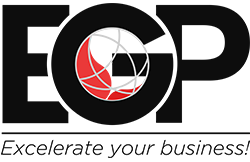When businesses consider upgrading their financial systems, one issue that frequently arises is whether they should modernize their general ledger/ERP software or their corporate performance management (CPM) software first.
“In the current environment (as impacted by COVID-19), organizations are more likely to opt for projects with significantly less change management risk that offer a quick time-to-value approach without the significant change management requirements associated with migrating to the latest generation cloud core financial management suites,” according to recent Gartner1 research.
ERP stands for enterprise resource planning, and it is a type of business software — usually, a set of linked applications — that a company uses to gather, store, manage and analyze data from a variety of business processes. The following are some examples of company tasks that ERP systems may assist automate and track:
- Manufacturing
- Supply Chain Management
- Project Management
- Order Processing
- Finance and Accounting – e.g., General Ledger, Fixed Assets, Accounts Payable, Accounts Receivable, Cash Management
The goal of ERP systems is to automate and integrate these activities across the company to improve transaction processing and operational accuracy and efficiency.
CPM (or EPM) solutions are designed to assist businesses in improving their management processes. By connecting corporate strategy to plans and execution, CPM software solutions assist businesses in achieving their financial goals. It entails gathering and integrating data from a variety of systems throughout the organization to plan, monitor, and manage performance. The following are some of the major tasks that EPM/CPM systems assist in automating:
- Strategic Planning
- Financial and Operational Budgeting, Planning and Forecasting
- Financial Close and Consolidation
- Financial and Management Reporting
- Analytics and Scenario Modeling
In terms of software, a small business may begin by budgeting with Microsoft Excel. The company may then install a simple CPM software system for budgeting, planning, and management reporting as the company expands. They may then upgrade to an enterprise-class CPM software solution with more robust financial consolidation, reporting, planning, forecasting, and analysis capabilities as the organization grows and expands in complexity, with multiple subsidiaries transacting with each other, international operations with multiple currencies, joint ventures, and partial ownership interests.
ERP or CPM: Which Should You Upgrade First?
If an organization already has both ERP and CPM software in place and their ERP system is no longer fulfilling their needs and hindering operations, there may be a solid reason to prioritize the ERP upgrade first, then upgrade the CPM software when the ERP upgrade is complete.
In a bigger company, however, an ERP upgrade or re-implementation may be a multi-year process that costs millions of dollars and causes significant business disruption. Update or deploy a new CPM system before the ERP upgrade project is a common technique used by businesses to avoid interruption
Why CPM first? Here are several reasons upgrading your CPM system first makes sense:
- Faster Time to Value
- More Flexibility
- Bridge to the Future
Photo by Daniel Tuttle on Unsplash



